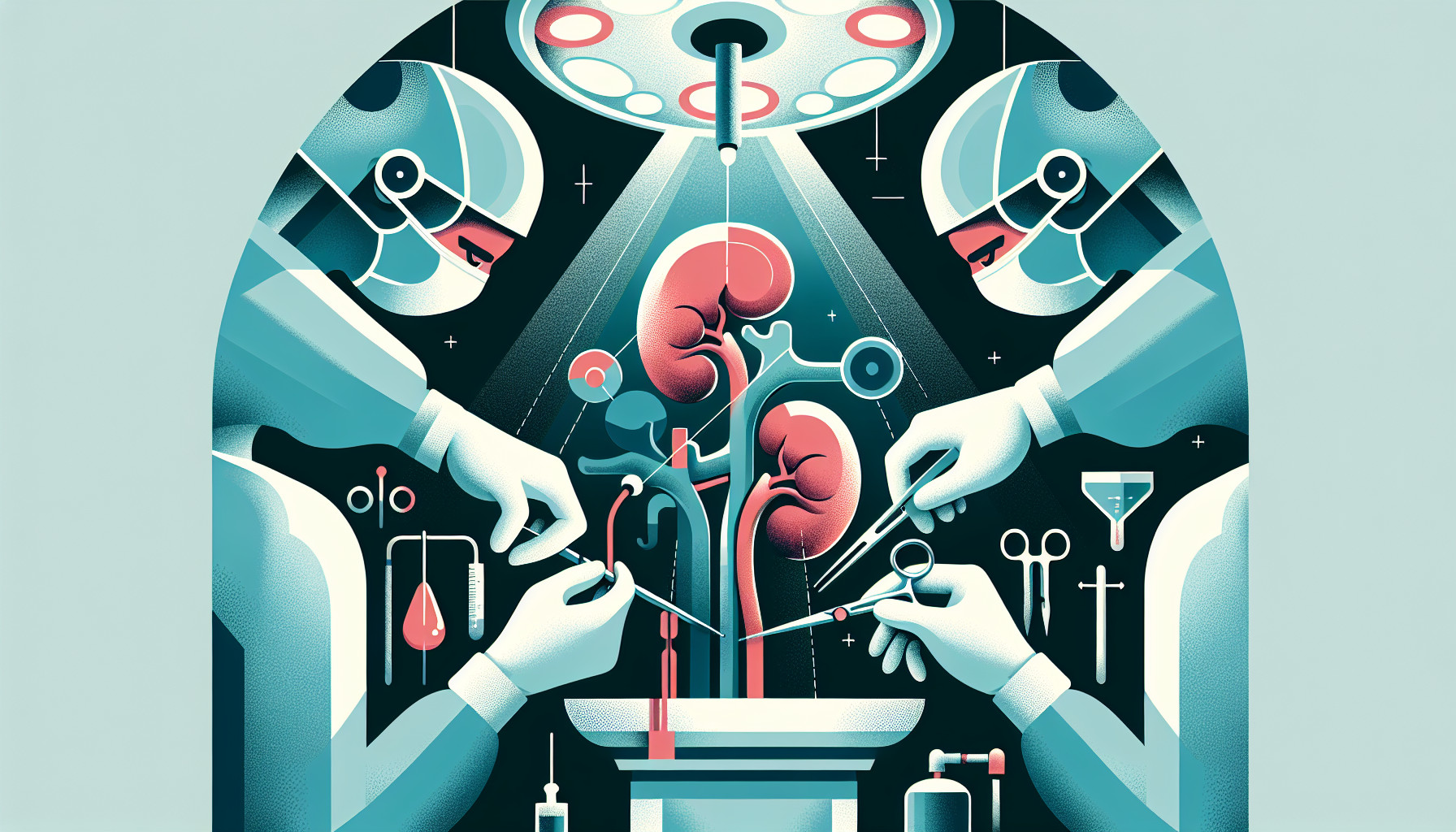Our Summary
This research paper explores the use of a device called LigaSure during a type of surgery called laparoscopic nephrectomy, which is used to remove diseased kidneys. The LigaSure device was used in this study to close blood vessels without the need for clips or stitches.
The study found that the median operation time was 45 minutes, with a median blood loss of 30 milliliters - both relatively low. Importantly, none of the patients had to convert to open surgery, no major bleeding events occurred, and all patients were able to leave the hospital the day after surgery.
The results suggest that using the LigaSure device during this type of kidney removal surgery could be beneficial due to shorter operation times, less blood loss, and shorter hospital stays. The researchers also note that this is the first study to highlight these potential benefits of using LigaSure in laparoscopic nephrectomy.
FAQs
- What is the LigaSure device and how is it used in laparoscopic nephrectomy?
- What were the results of the study on the use of LigaSure in laparoscopic nephrectomy?
- How does the use of LigaSure potentially benefit patients undergoing laparoscopic nephrectomy?
Doctor’s Tip
A helpful tip a doctor might tell a patient about laparoscopic nephrectomy is to ask about the use of the LigaSure device during the surgery. This device can help reduce operation time, blood loss, and hospital stay, potentially leading to a smoother recovery process. It’s important to discuss all available options with your healthcare provider to determine the best approach for your individual situation.
Suitable For
Patients who are typically recommended for laparoscopic nephrectomy include those with conditions such as kidney cancer, kidney stones, kidney cysts, or other kidney diseases. Laparoscopic nephrectomy may also be recommended for patients who need a kidney transplant, have a non-functioning kidney, or have a kidney that is causing pain or other symptoms. Overall, laparoscopic nephrectomy is a minimally invasive surgical option that may be suitable for a wide range of patients who require kidney removal.
Timeline
Before laparoscopic nephrectomy:
- Patient undergoes pre-operative evaluation and consultation with a urologist
- Patient may undergo imaging tests such as CT scans or MRIs to assess the condition of the kidney
- Patient may need to fast for a certain period of time before surgery
- Patient may need to stop taking certain medications before surgery
- Patient is briefed on the risks and benefits of the surgery
After laparoscopic nephrectomy:
- Patient is monitored in the recovery room for a period of time
- Patient may experience pain and discomfort at the incision sites
- Patient may be prescribed pain medication to manage post-operative pain
- Patient is encouraged to walk and move around to aid in recovery
- Patient may need to follow a specific diet or activity restrictions post-surgery
- Patient will have follow-up appointments with their urologist to monitor their recovery and kidney function
Overall, laparoscopic nephrectomy is a minimally invasive procedure that allows for quicker recovery and shorter hospital stays compared to traditional open surgery.
What to Ask Your Doctor
- What are the potential risks and complications associated with laparoscopic nephrectomy using the LigaSure device compared to traditional methods?
- How experienced are you in performing laparoscopic nephrectomy procedures with the LigaSure device?
- What is the success rate of using the LigaSure device in closing blood vessels during laparoscopic nephrectomy?
- How long is the recovery time expected to be after undergoing laparoscopic nephrectomy with the LigaSure device?
- Are there any long-term effects or complications that I should be aware of post-surgery?
- How will my kidney function be monitored after the surgery?
- Are there any specific dietary or lifestyle changes that I should make after undergoing laparoscopic nephrectomy?
- Will I need any follow-up appointments or tests after the surgery?
- What is the likelihood of needing further treatment or surgery in the future after laparoscopic nephrectomy with the LigaSure device?
- Can you provide me with more information about the benefits of using the LigaSure device compared to other methods in laparoscopic nephrectomy?
Reference
Authors: Saouli A, Karmouni T, El Khader K, Koutani A, Attya Andaloussi AI. Journal: Prog Urol. 2023 May;33(6):344-347. doi: 10.1016/j.purol.2023.03.006. Epub 2023 Apr 18. PMID: 37080876
